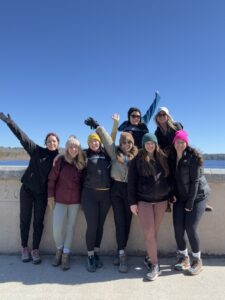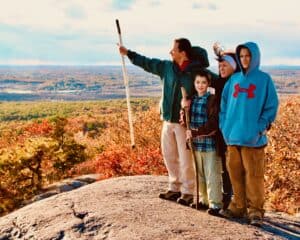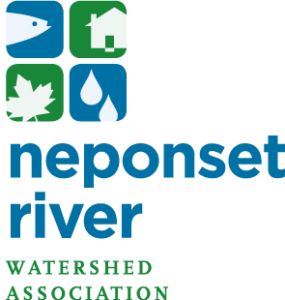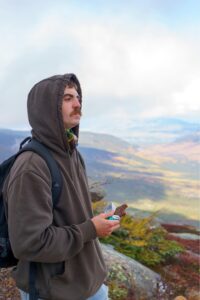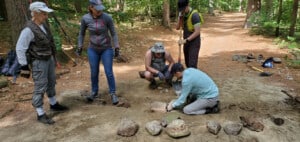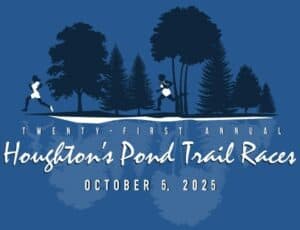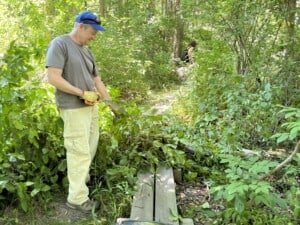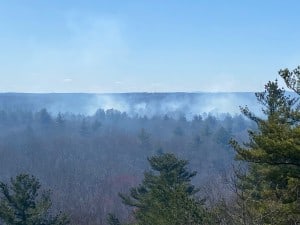The Blue Hills surrounds and protects sections of 2 watersheds around Canton and Milton: the Blue Hills River and the Neponset River. The watershed functions as land surrounding a water source, such as a river, that flows into a lake or other large body of water, such as the Atlantic Ocean. Water from the Neponset River watershed provides drinking water for over 112,000 people in the local area. While protected natural land areas, such as the Blue Hills are very important in maintaining a healthy watershed, there are obstacles that threaten our water systems that you should know about!
Help protect our watersheds! Become a member of the Friends today!
Climate change. Changes in temperature, weather patterns, and intensity of storms are impacting our watersheds. Large storms with powerful winds are occurring with higher frequency, and risk uprooting trees and surging waters that alter the patterns in the watershed. These changes occur at a national and local level. Nationally, EPA scientific models suggest that water flow has been decreasing in the Rockies and the southwest, while increasing in the northeast. If the change occurred slowly, it might not have a impact on the environment and species that depend on the water. However, when these changes occur rapidly, surges in water can wipe out entire habitats and at-risk species that depend on the predictable flow of water.
Man-made river changes. When rivers are channelized or dammed, and the flood planes surrounding them fill, this breaks up the natural flow of water. If the flood planes cannot function as they are intended to, by soaking up excess rain water and gently releasing it to the river, then rainfall from big storms will be dispersed and enter the river too quickly. This can cause flooding and structural damage to the surrounding areas and prevents the ground soak up the water and filter it first.
Pollution/waste. Human impact on a watershed at the local & individual level comes from our use of waste. Wasteful trash, animal feces, and chemical treatment enter the water during a storm. Rain water and runoff brings this pollution into the rivers and not only increases our water treatment costs, but also destroys some of the water habitat for wildlife that depend on healthy waterways, such as fish and fowl.
Land development. Similar to changes in the river channels, developing the land in a watershed interrupts the natural flow of water. When rain hits a paved parking lot or a rooftop, it does not get the chance to be filtered by the soil or absorbed as ground water. This pours the water directly into the river much quicker, causing flooding. This development also prevents a natural water-surrounding habitat to form, with all the flora and fauna that create a balance in the delicate system.
Help protect our watersheds! Become a member of the Friends today!
How can you help? There are a few things that we can do to help protect our watersheds! To combat climate change, be mindful of our own carbon footprint and reduce emissions as best we can. To limit waste in the water, be careful not to drop waste and pick up all pet feces. To protect against river and land development, become a member of the Friends of the Blue Hills! The Friends of the Blue Hills is dedicated to preserving the land in its natural state, the healthiest state for the watershed. By becoming a member, your donation will go towards efforts to advocate and give a voice to the watershed and the flora and fauna that depend on it!


